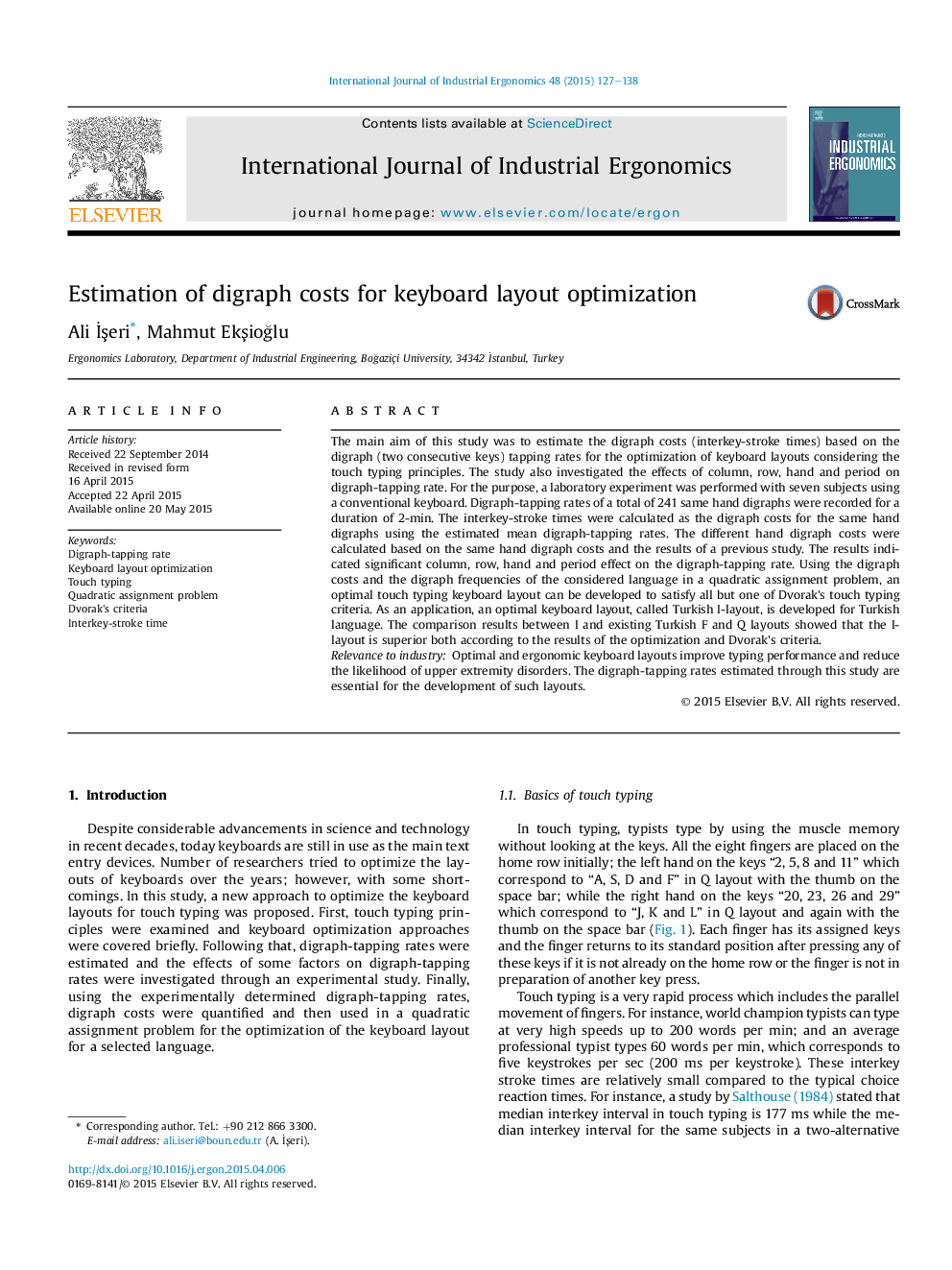| Article ID | Journal | Published Year | Pages | File Type |
|---|---|---|---|---|
| 1096000 | International Journal of Industrial Ergonomics | 2015 | 12 Pages |
•This study introduced a systematic methodology for developing ergonomic and optimal keyboard layouts.•Normative data of digraph-tapping rates were estimated empirically for 241 same hand digraphs.•The effects of some factors on typing speed were investigated.•Based on the digraph-tapping data, digraph costs values were calculated to be used in the optimization of keyboard layouts.•The keyboard layout developed for Turkish by the methodology was superior to the existing Turkish Q and F layouts.
The main aim of this study was to estimate the digraph costs (interkey-stroke times) based on the digraph (two consecutive keys) tapping rates for the optimization of keyboard layouts considering the touch typing principles. The study also investigated the effects of column, row, hand and period on digraph-tapping rate. For the purpose, a laboratory experiment was performed with seven subjects using a conventional keyboard. Digraph-tapping rates of a total of 241 same hand digraphs were recorded for a duration of 2-min. The interkey-stroke times were calculated as the digraph costs for the same hand digraphs using the estimated mean digraph-tapping rates. The different hand digraph costs were calculated based on the same hand digraph costs and the results of a previous study. The results indicated significant column, row, hand and period effect on the digraph-tapping rate. Using the digraph costs and the digraph frequencies of the considered language in a quadratic assignment problem, an optimal touch typing keyboard layout can be developed to satisfy all but one of Dvorak's touch typing criteria. As an application, an optimal keyboard layout, called Turkish I-layout, is developed for Turkish language. The comparison results between I and existing Turkish F and Q layouts showed that the I-layout is superior both according to the results of the optimization and Dvorak's criteria.Relevance to industryOptimal and ergonomic keyboard layouts improve typing performance and reduce the likelihood of upper extremity disorders. The digraph-tapping rates estimated through this study are essential for the development of such layouts.
